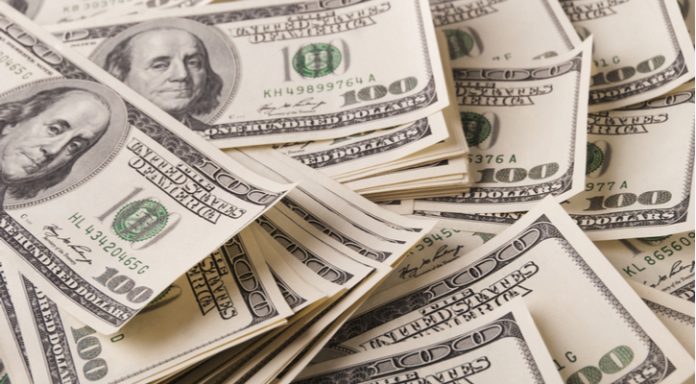The pound US dollar exchange rate ended Friday at approximately the same price that it started the day, US$1.3942. This translated to a 0.6% increase across the week, the second straight week of gains for the pound versus the dollar.
| What do these figures mean? |
|---|
|
When measuring the value of a pair of currencies, one set equals 1 unit and the other shows the current equivalent. As the market moves, the amount will vary from minute to minute. For example, it could be written: 1 GBP = 1.28934 USD Here, £1 is equivalent to approximately $1.29. This specifically measures the pound’s worth against the dollar. If the US dollar amount increases in this pairing, it’s positive for the pound. Or, if you were looking at it the other way around: 1 USD = 0.77786 GBP In this example, $1 is equivalent to approximately £0.78. This measures the US dollar’s worth versus the British pound. If the sterling number gets larger, it’s good news for the dollar. |
The pound remained resilient against the dollar through the previous week, despite a very quiet UK economic calendar and with few developments on the Brexit front. This week promises to be very different. Market participants will have a barrage of influential data to digest, in addition to the Bank of England monetary policy committee meeting, which will conclude with a rate announcement on Thursday. Added to this there is the G20 finance ministers meeting in Buenos Aires and the EU Summit which begins on Thursday, where the main topic of discussion is expected to be trade and a Brexit transition deal.
Brexit negotiators have been working across the weekend, keen to try to reach a transition deal proper to the EU Summit. However, the Irish border issue continues to pose a problem with little progress having been made.
A key commons committee report has said that it is difficult to see how a Brexit deal can be negotiated in time. There are just 7 months to go until Article 50 negotiations are due to end and there are still many issues that haven’t been resolved. Suggestions in the report to request for an extension to Articles 50 could help solve the issue, although the Committee is firefly divided on the subject. Should not deal be reached within the allotted time frame, Britain would face a hard Brexit. This would be the worst-case scenario for the pound.
| Why is a “soft” Brexit better for sterling than a “hard” Brexit? |
|---|
| A soft Brexit implies anything less than UK’s complete withdrawal from the EU. For example, it could mean the UK retains some form of membership to the European Union single market in exchange for some free movement of people, i.e. immigration. This is considered more positive than a “hard” Brexit, which is a full severance from the EU. The reason “soft” is considered more pound-friendly is because the economic impact would be lower. If there is less negative impact on the economy, foreign investors will continue to invest in the UK. As investment requires local currency, this increased demand for the pound then boosts its value. |
Federal Reserve rate decision central focus for the week
US politics drove trading in the dollar last week. Changes to President Trump’s team, in addition to trade war fears ensured the dollar lost ground versus the pound across the week. This week the focus will switch to monetary policy and the Federal Reserve. The Fed are due to give a monetary policy decision on Wednesday and analysts and investors alike are expecting the Fed to hike interest rates. The big question is whether the Fed, under the helm of new Chairman Jerome Powell will given any insight as to the path of interest rate hikes across the year?
| Why do raised interest rates boost a currency’s value? |
|---|
| Interest rates are key to understanding exchange rate movements. Those who have large sums of money to invest want the highest return on their investments. Higher interest rate environments tend to offer higher yields. So, if the interest rate or at least the interest rate expectation of a country is relatively higher compared to another, then it attracts more foreign capital investment. Large corporations and investors need local currency to invest. More local currency used then boosts the demand of that currency, pushing the value higher. |
|
This article was initially published on TransferWise.com from the same author. The content at Currency Live is the sole opinion of the authors and in no way reflects the views of TransferWise Inc. |





